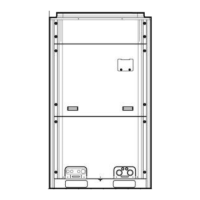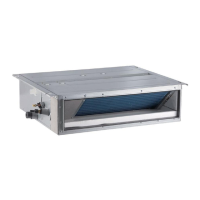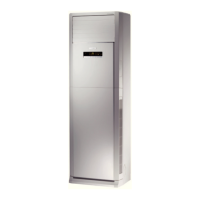DC Inverter Multi VRF System
14
4.3.3 Pipe Bending
(1) Reshape the pipe by hand. Be careful not to damage the pipe.
Fig. 11 Fig. 12
(2) Do not bend the pipe over 90°.
(3) If pipe is repeatedly bent or stretched, it will get hard and difficult to bend and stretch
again. Therefore, do not bend or stretch the bend for over 3 times.
(4) In case that direct bending will open cracks to the pipe, first use sharp cutter to cut the
insulating layer, as shown in Fig.12. Do not bend the pipe until it is exposed. When
bending is done, wrap the pipe with insulating layer and then secure it with adhesive
tape.
4.3.4 Indoor Pipe Connection
(1) Remove pipe cover and pipe plug.
(2) Direct the flared part of copper pipe to the center of screwed joint. Twist on the flared
nut tightly by hand, as in Fig.13. (Make sure indoor pipe is correctly connected.
Improper location of the center will prevent flared nut from being securely twisted.
Thread of nut will get damaged if the flared nut is twisted forcibly.)
(3) Use torque wrench to twist on the flared nut tightly until the wrench gives out a click
sound. (Hold the handle of wrench and make it at right angle to the pipe. as in Fig.14)
(4) Use sponge to wrap the un-insulated connection pipe and joint. Then tie the sponge
tightly with plastic tape.
(5) Connection pipe should be supported by a bearer rather than the unit.
(6) The bending angle of piping should not be too small; otherwise the piping might have
cracks. Please use a pipe bender to bend the pipe.
(7) When connecting IDU with connection pipe, do not pull the big and small joints of IDU
with force in case the capillary tube or other tubes have cracks and cause leakage.
Copyright 2018. This translation is property of GREE PRODUCTS SL. All rights reserved. Total or partial reproduction without its express authorization is prohibited.

